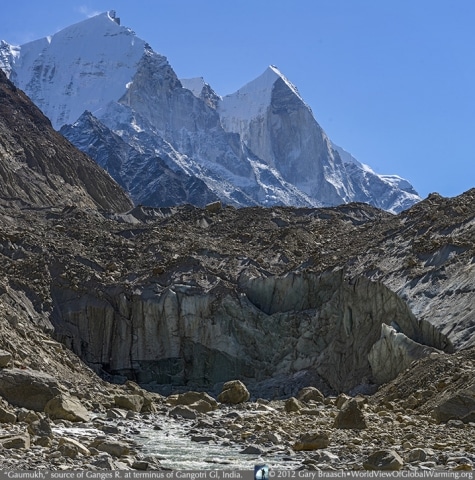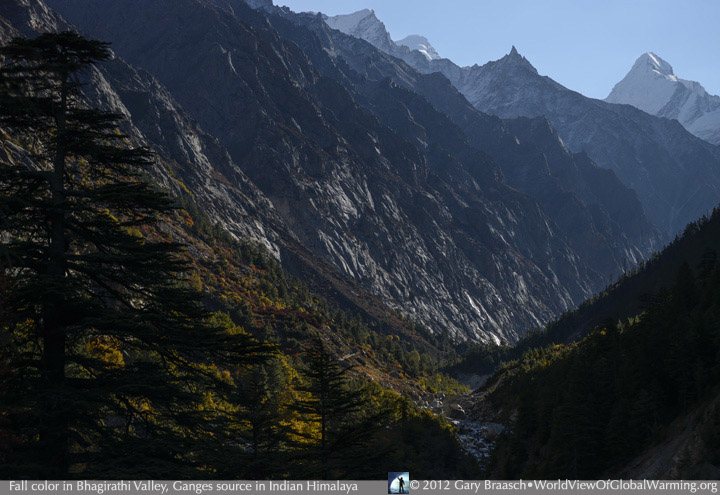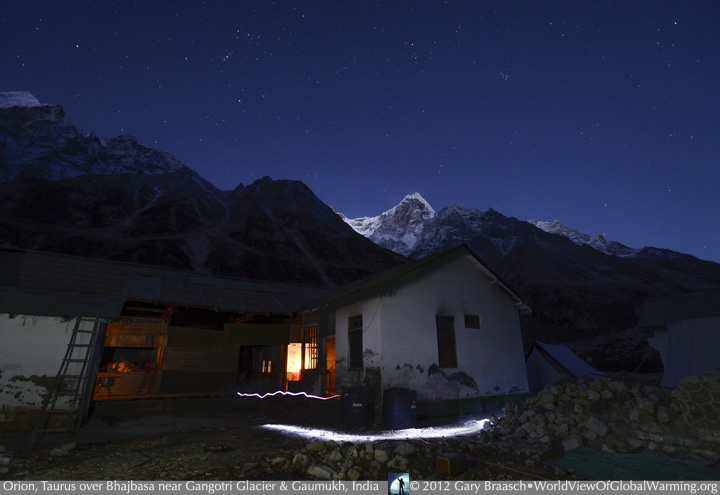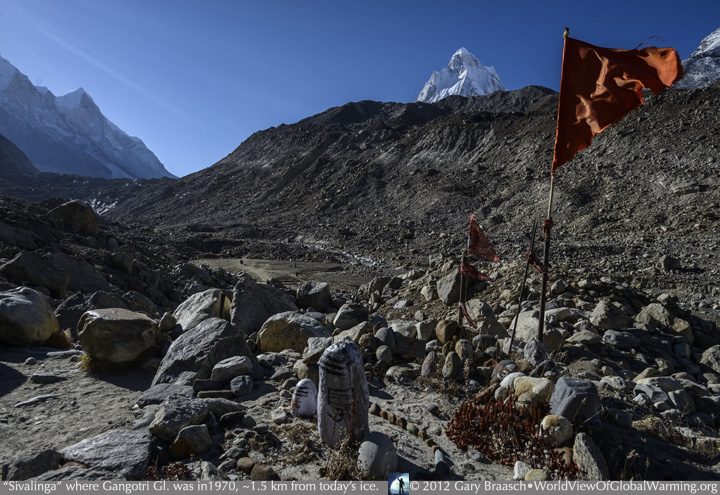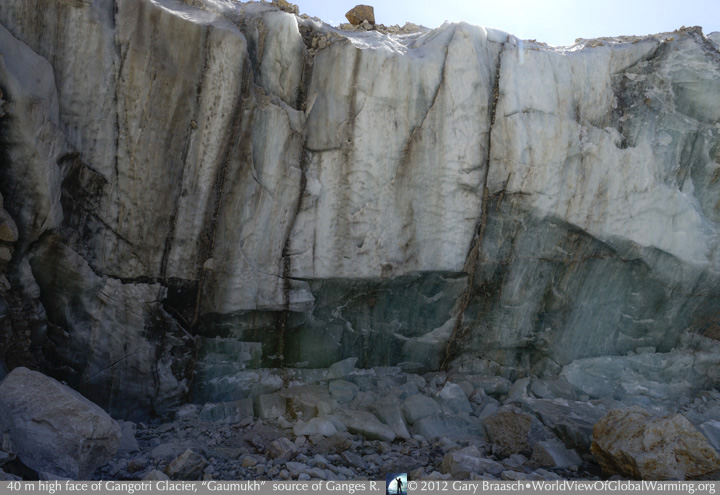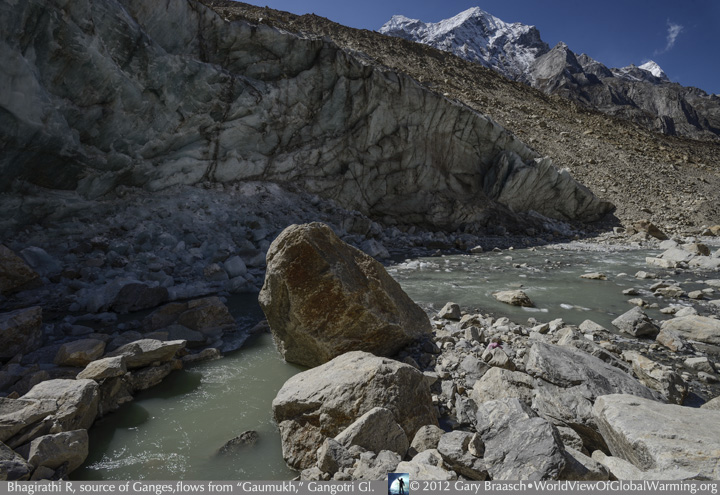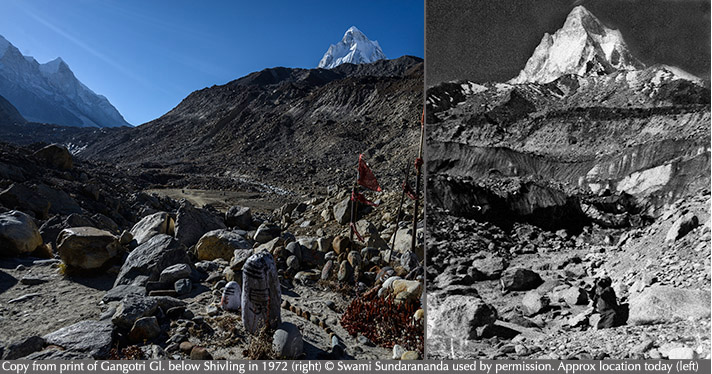Photography is a key tool used by scientists to monitor and analyze the physical effects of climate change on the planet. More than that, images are an essential tool for informing the public of what is happening – as they say, pictures tell a thousand words.
Gary Braasch is a photojournalist who has captured the extraordinary images of climate change for the last 11 years through his organization World View of Global Warming.
Braasch’s most recent expedition took him to the Himalayas, where he documented the state of the Gangotri Glacier.*
Gangotri, India’s second largest glacier, has been retreating for more than a century. Now, this key source of fresh waters shrinks by 18 meters per year.
Below are a few samples of Braasch’s striking and revealing photographs. Alongside some of the images, I’ve also inserted quotes from Braasch explaining more about the photo and how it fits into the climate change story.
At about 1500 m from the current terminus of the Gangotri Glacier (see the grey areas of ice below the peaks at upper left), a sivalingam, circle of stones and flags mark a shrine where the glacier was in the late 1960s to early 1970s. Holy men, sadhus, and devout Hindu travelers have been coming here for centuries, and the route is well marked with shrines.
Gaumukh, the sacred glacier source of the Ganges River, where the Bhagirathi River appears right out of the terminus of the Gangotri Glacier. Behind, the up to 6800 meter Bhagnirathi Peaks guard the valley. The glacier terminus is now at 30 degrees 55 minutes 34 seconds North and 79 degrees 4 minutes 48 seconds East – and retreating approximately 18 meters a year. This is a slower rate than during the late 20th C, probably due to the heavy debris cover on the ice. Despite this, the glacier is rapidly thinning. Glaciologists and meteorologists continue to study to assess the state of climate change in the Himalaya.
View of the curving and melting side of the Gangotri glacier, with some of the thousands of enormous boulders which the moving ice has deposited in the stream bed. The Bhagnirathi River seems to well up out the earth a few meters out from the face of the glacier – rather than flow out from an ice cave which has been the case for much of the glacier’s recorded history.
During our visit to Gangotri, we were privileged and honored to meet Swami Sundarananda, the 86 year old sadhu, mountaineer, photographer and environmental leader. He has been photographing the Himalaya and the source of the Ganges since the 1950s with great skill and perception. He graciously has allowed us to publish here a copy of one of his prints of the glacier from 1972 to help show changes over 40 years. The Swami’s intense emotions about and knowledge of the destructive growth of development in the Himalaya are a model of environmental communication.
Please visit Gary Braasch’s website and support his continued work to highlight the impacts of climate change through photography.
*This article has been revised to reflect the following correction:
December 16, 2012: This article orginally stated the Gangtori Glacier is the major source of fresh water for the Ganges river, which is incorrect. The Ganges is primarily fed by monsoon rains and groundwater.
Subscribe to our newsletter
Stay up to date with DeSmog news and alerts


